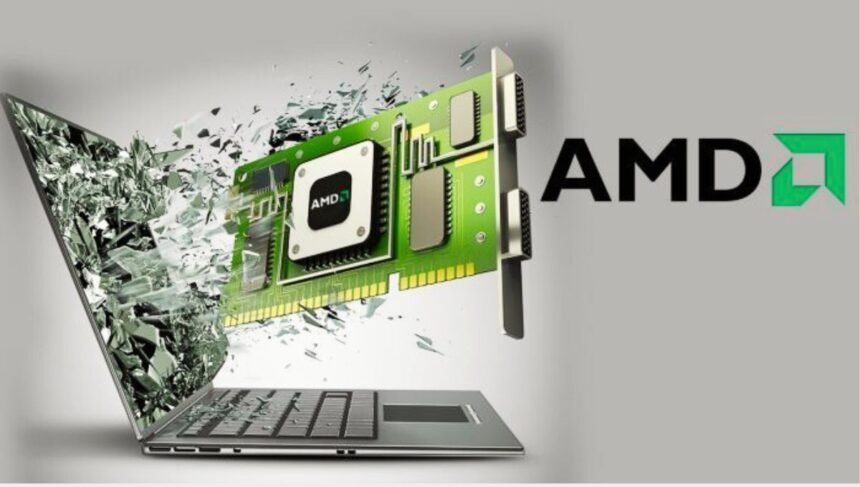Investing in technology stocks can often be a rollercoaster, but for those who invested in Advanced Micro Devices, Inc. (AMD) five years ago, the ride has been significantly upward.
In this detailed analysis, we’ll explore how a $10,000 investment in AMD on June 7, 2019, would have grown by June 4, 2024.
We’ll look into the stock performance, financial statements, and market factors that contributed to AMD’s growth.
Stock Performance: June 7, 2019 – June 4, 2024
On June 7, 2019, AMD’s stock price was $32.41. By June 4, 2024, the stock price had risen to $159.99. Here’s a look at the journey:
- Initial Investment Calculation:
- Initial investment: $10,000
- Price per share on June 7, 2019: $32.41
- Number of shares purchased: $10,000 / $32.41 ≈ 308.59 shares
- Final Value Calculation:
- Price per share on June 4, 2024: $159.99
- Value of investment: 308.59 shares * $159.99 ≈ $49,367.14
Therefore, if you had invested $10,000 in AMD five years ago, your investment would be worth approximately $49,367.14 today. This represents a nearly 393.7% return on investment.
AMD Investment Calculator
Financial Statement Analysis
To understand this significant growth, we need to delve into the financial performance over the years. The financial data from 2020 to 2023 reveals a strong growth trajectory in various aspects of AMD’s operations.
Income Statement Highlights
| Year Ending | Total Revenue | Gross Profit | Operating Income | Net Income |
|---|---|---|---|---|
| 12/30/2023 | $22,680,000 | $10,460,000 | $401,000 | $854,000 |
| 12/31/2022 | $23,601,000 | $10,603,000 | $1,264,000 | $1,320,000 |
| 12/25/2021 | $16,434,000 | $7,929,000 | $3,648,000 | $3,162,000 |
| 12/26/2020 | $9,763,000 | $4,347,000 | $1,369,000 | $2,490,000 |
- Revenue Growth: This company revenue increased significantly from $9.76 billion in 2020 to $22.68 billion in 2023. This increase in revenue is a strong indicator of the company’s expanding market presence and product acceptance.
- Gross Profit: The gross profit margin remained strong, indicating efficient cost management and a high demand for this stock products.
- Operating Income and Net Income: While operating income and net income saw some fluctuations, the overall profitability remained positive, showcasing the company’s ability to manage its expenses effectively.
Balance Sheet Highlights
| Year Ending | Total Assets | Total Liabilities | Total Equity |
|---|---|---|---|
| 12/30/2023 | $67,885,000 | $11,993,000 | $55,892,000 |
| 12/31/2022 | $67,580,000 | $12,830,000 | $54,750,000 |
| 12/25/2021 | $12,419,000 | $4,922,000 | $7,497,000 |
| 12/26/2020 | $8,962,000 | $3,125,000 | $5,837,000 |
- Total Assets and Equity: This company total assets and equity saw substantial growth, reflecting the company’s increasing value and investor confidence.
- Liabilities: Although liabilities also increased, the growth in assets and equity outpaced liabilities, indicating strong financial health.
Cash Flow Highlights
| Year Ending | Net Cash Flow-Operating | Net Cash Flow-Investing | Net Cash Flow-Financing |
|---|---|---|---|
| 12/30/2023 | $1,667,000 | -$1,423,000 | -$1,146,000 |
| 12/31/2022 | $3,565,000 | $1,999,000 | -$3,264,000 |
| 12/25/2021 | $3,521,000 | -$686,000 | -$1,895,000 |
| 12/26/2020 | $1,071,000 | -$952,000 | $6,000 |
- Operating Cash Flow: Positive cash flow from operating activities indicates that AMD’s core business operations are generating significant cash.
- Investing Activities: The negative cash flow from investing activities is primarily due to capital expenditures and investments, which are essential for future growth.
- Financing Activities: The negative cash flow from financing activities, particularly in recent years, suggests that this company has been repaying debt and possibly buying back shares, which is often seen as a sign of financial strength.
Key Financial Ratios
To further understand AMD’s performance, we can look at some key financial ratios.
| Ratio Type | 2023 | 2022 | 2021 | 2020 |
|---|---|---|---|---|
| Current Ratio | 250.68% | 235.81% | 202.43% | 254.16% |
| Quick Ratio | 185.63% | 176.61% | 156.32% | 196.28% |
| Cash Ratio | 86.31% | 91.93% | 85.09% | 94.75% |
| Gross Margin | 46.12% | 44.93% | 48.25% | 44.53% |
| Operating Margin | 1.77% | 5.36% | 22.20% | 14.02% |
| Profit Margin | 3.77% | 5.59% | 19.24% | 25.50% |
- Liquidity Ratios: AMD’s current, quick, and cash ratios indicate strong liquidity, meaning the company is well-positioned to meet its short-term obligations.
- Profitability Ratios: Gross margin remained relatively stable, reflecting consistent cost control and pricing power. However, the operating and profit margins fluctuated, with a notable decrease in recent years due to increased operating expenses and strategic investments.
Market Factors and Strategic Moves
Several market factors and strategic decisions contributed to AMD’s stock performance over the past five years:
- Product Innovation: AMD continued to innovate with its Ryzen and EPYC processors, which gained significant market share in both consumer and enterprise segments.
- Market Expansion: AMD successfully expanded its presence in the data center and gaming markets, driving revenue growth.
- Strategic Acquisitions: The acquisition of Xilinx in 2022 was a major move that strengthened this stock position in adaptive computing and broadened its product portfolio.
- Competitive Positioning: AMD effectively competed with industry giants like Intel and NVIDIA, leveraging its technology advancements to capture more market share.
Conclusion
An investment of $10,000 in AMD stock on June 7, 2019, would have grown to approximately $49,367.14 by June 4, 2024.
This impressive return is a testament to AMD’s strong financial performance, strategic initiatives, and market positioning.
The company’s consistent revenue growth, effective cost management, and strategic acquisitions played pivotal roles in enhancing shareholder value.
As AMD continues to innovate and expand, its future prospects look promising, making it a noteworthy consideration for investors looking at the technology sector.





